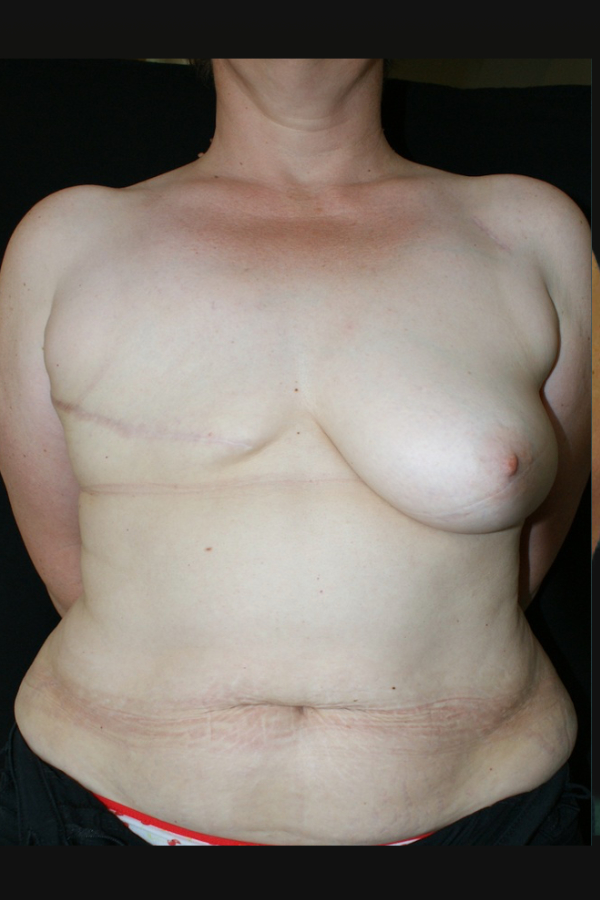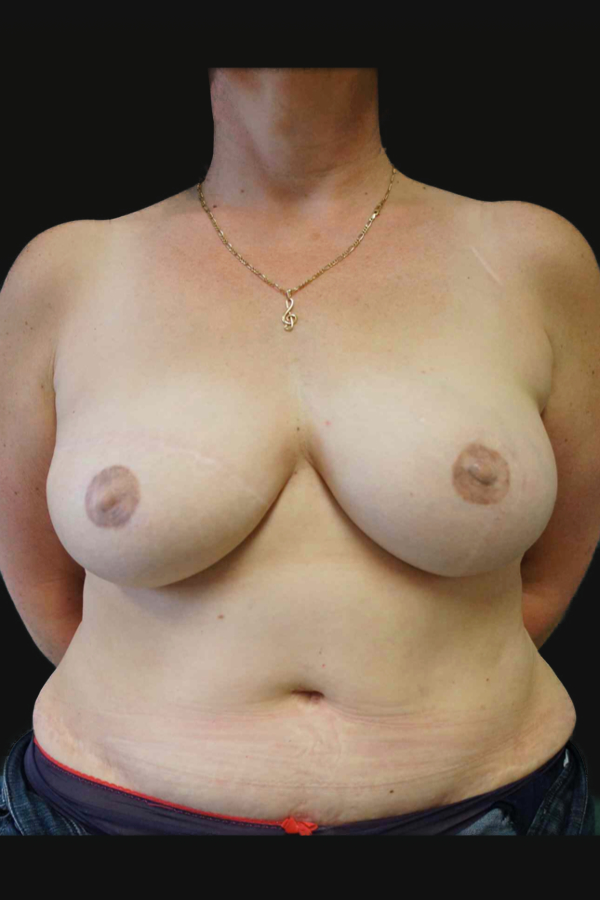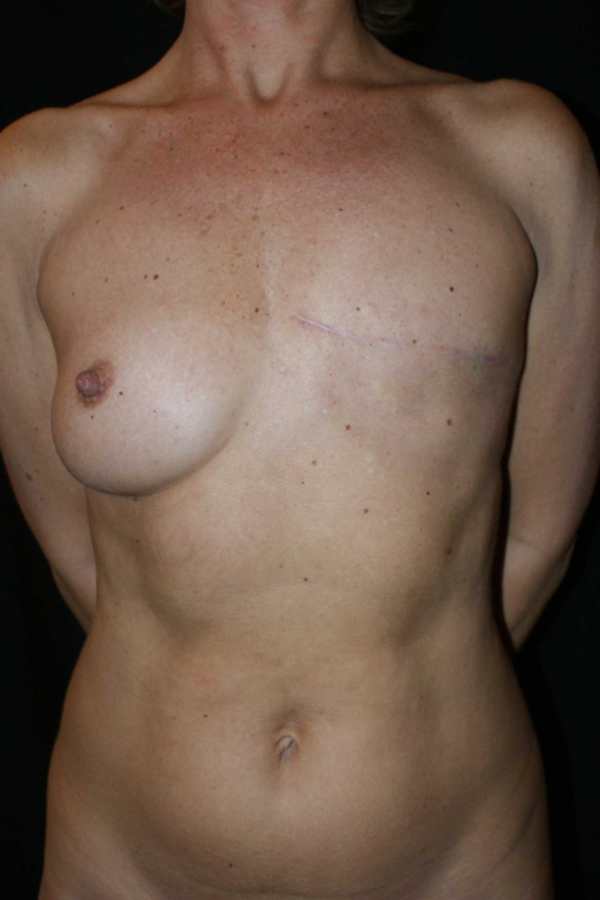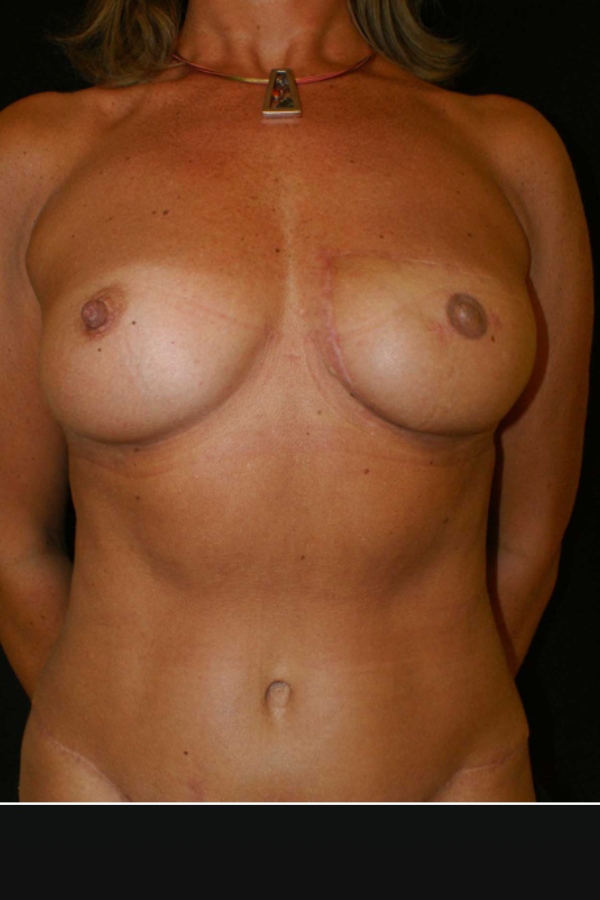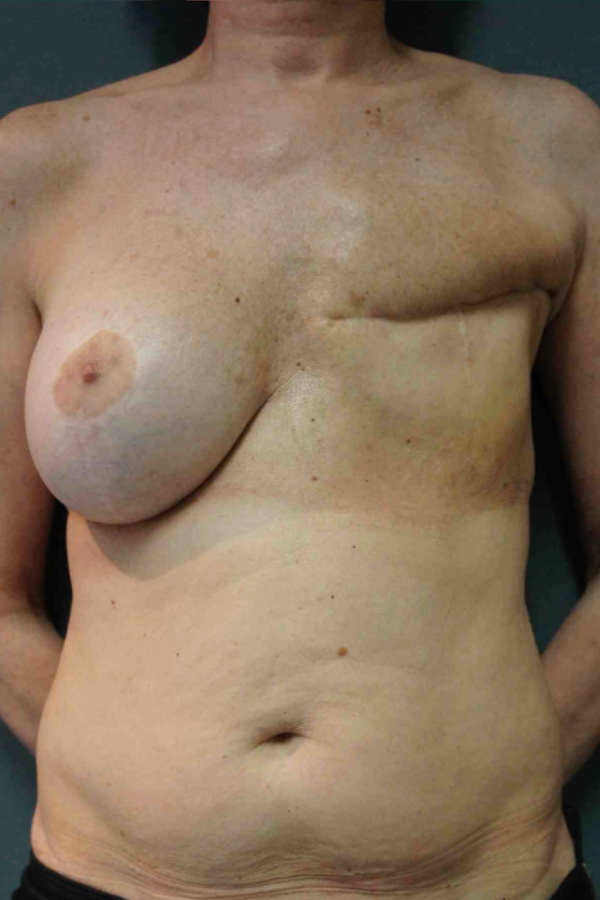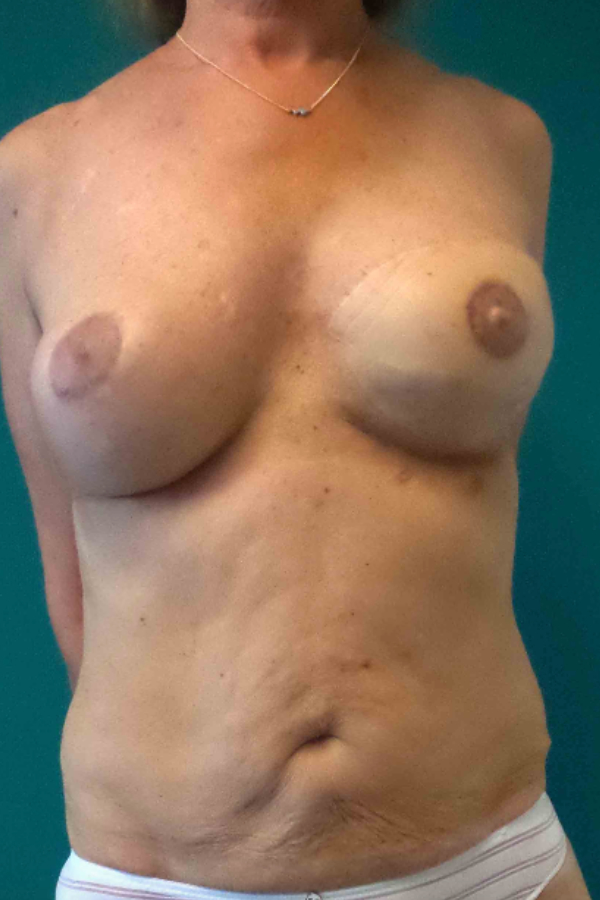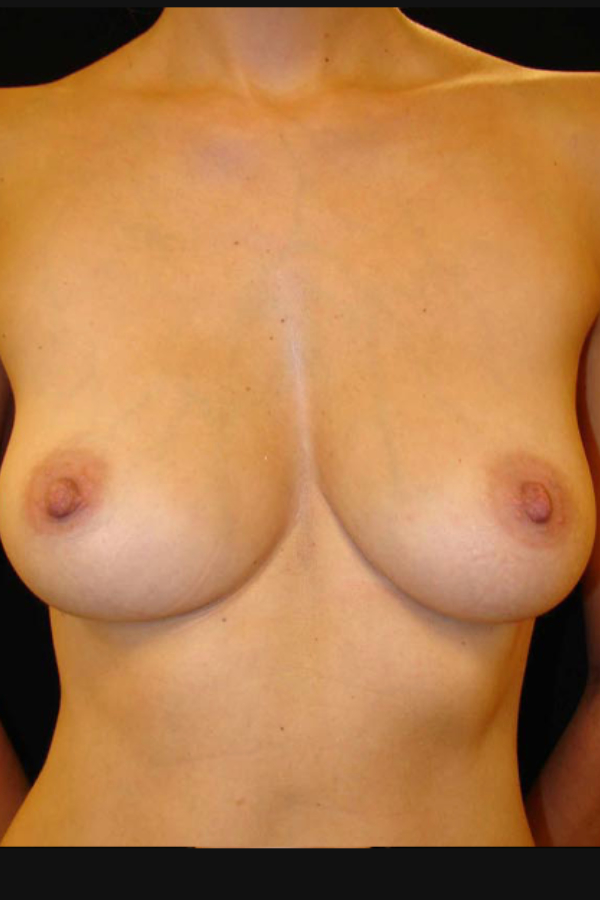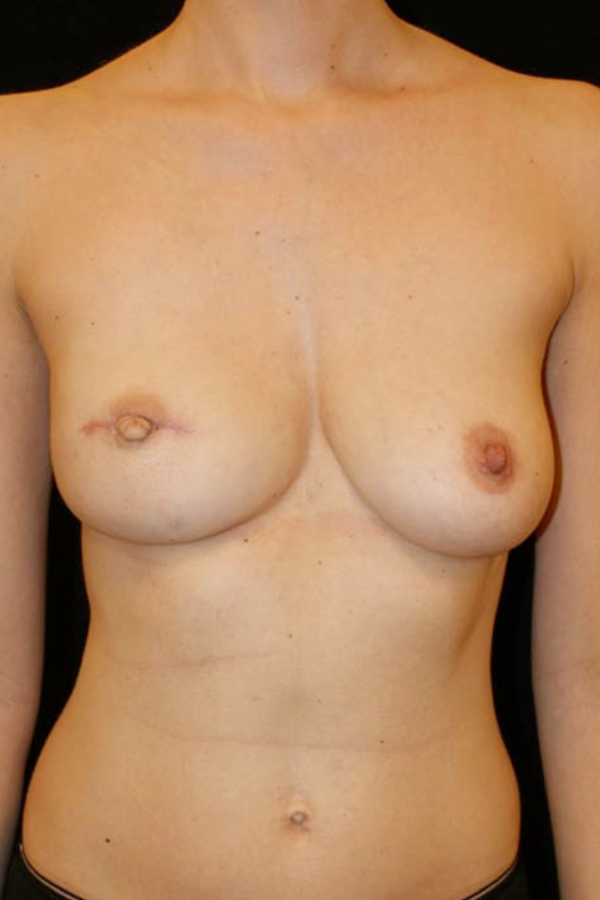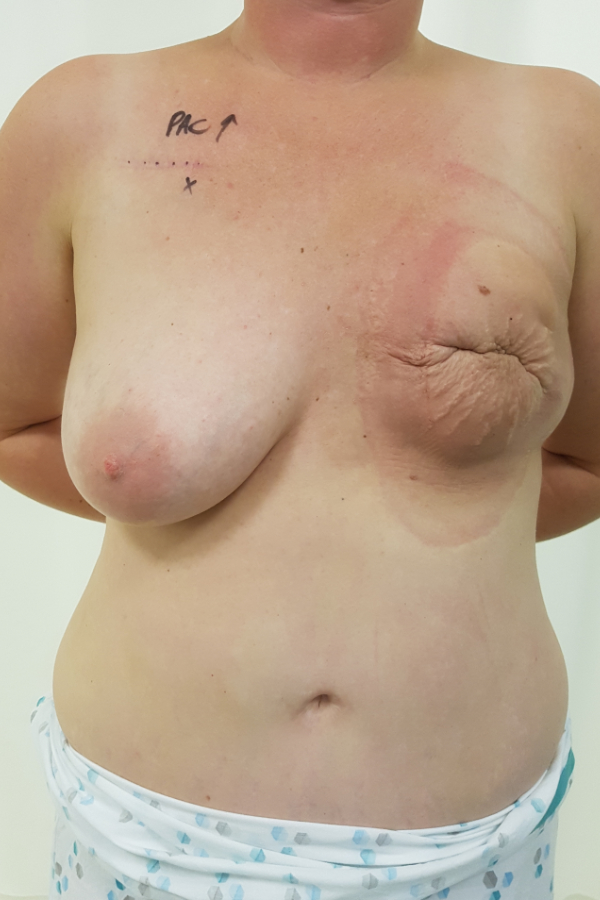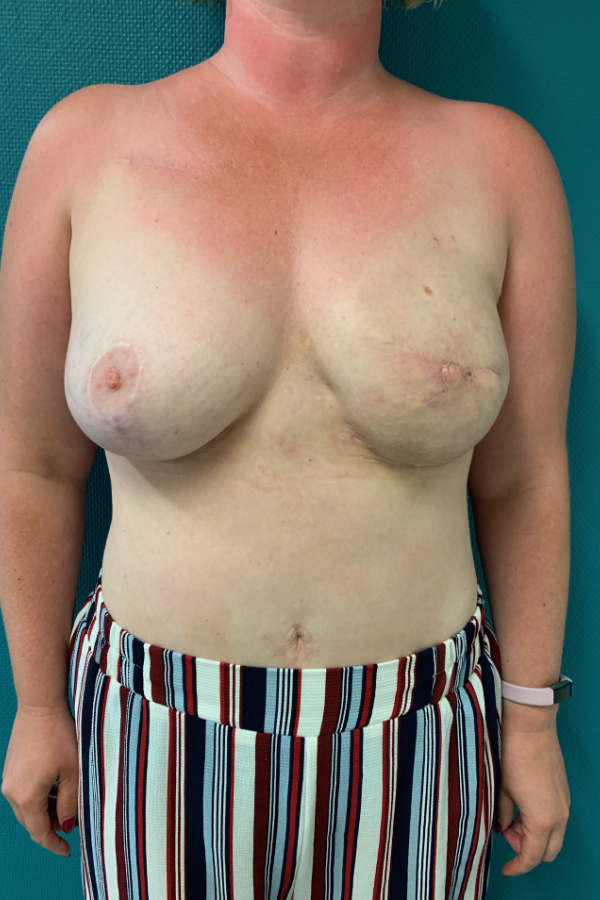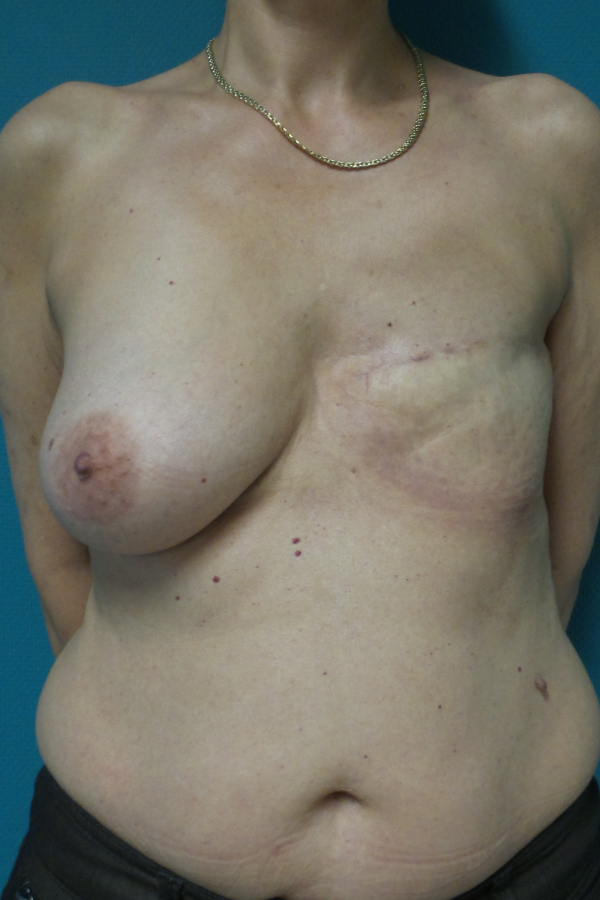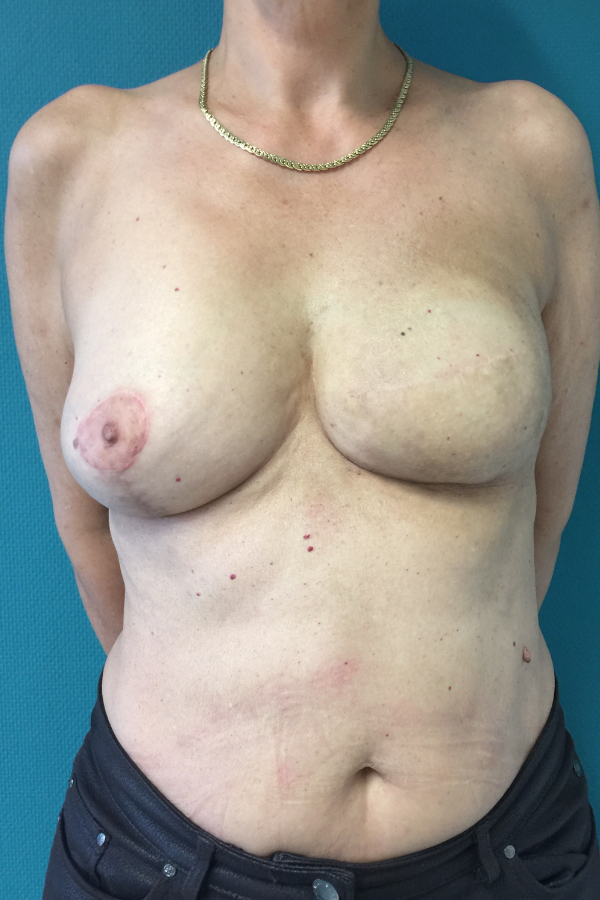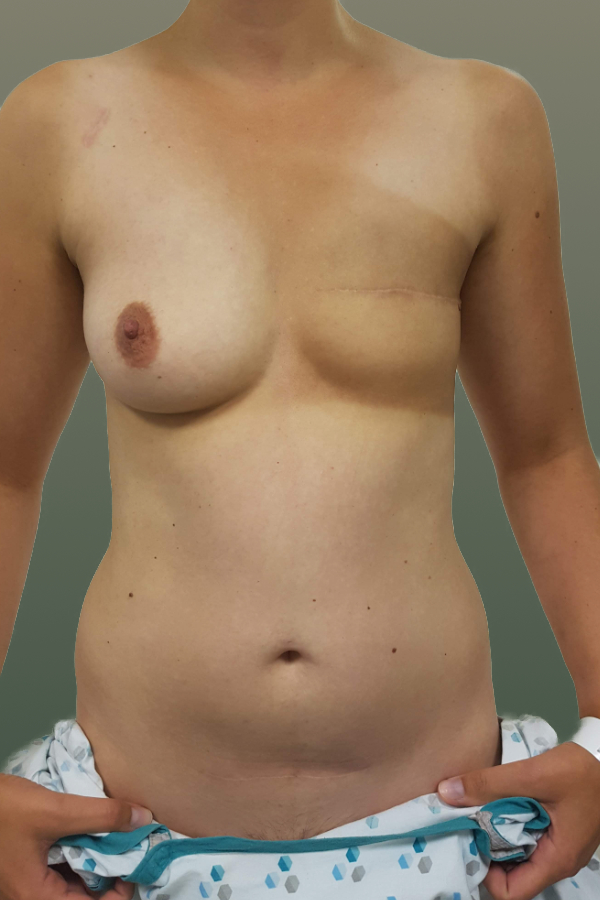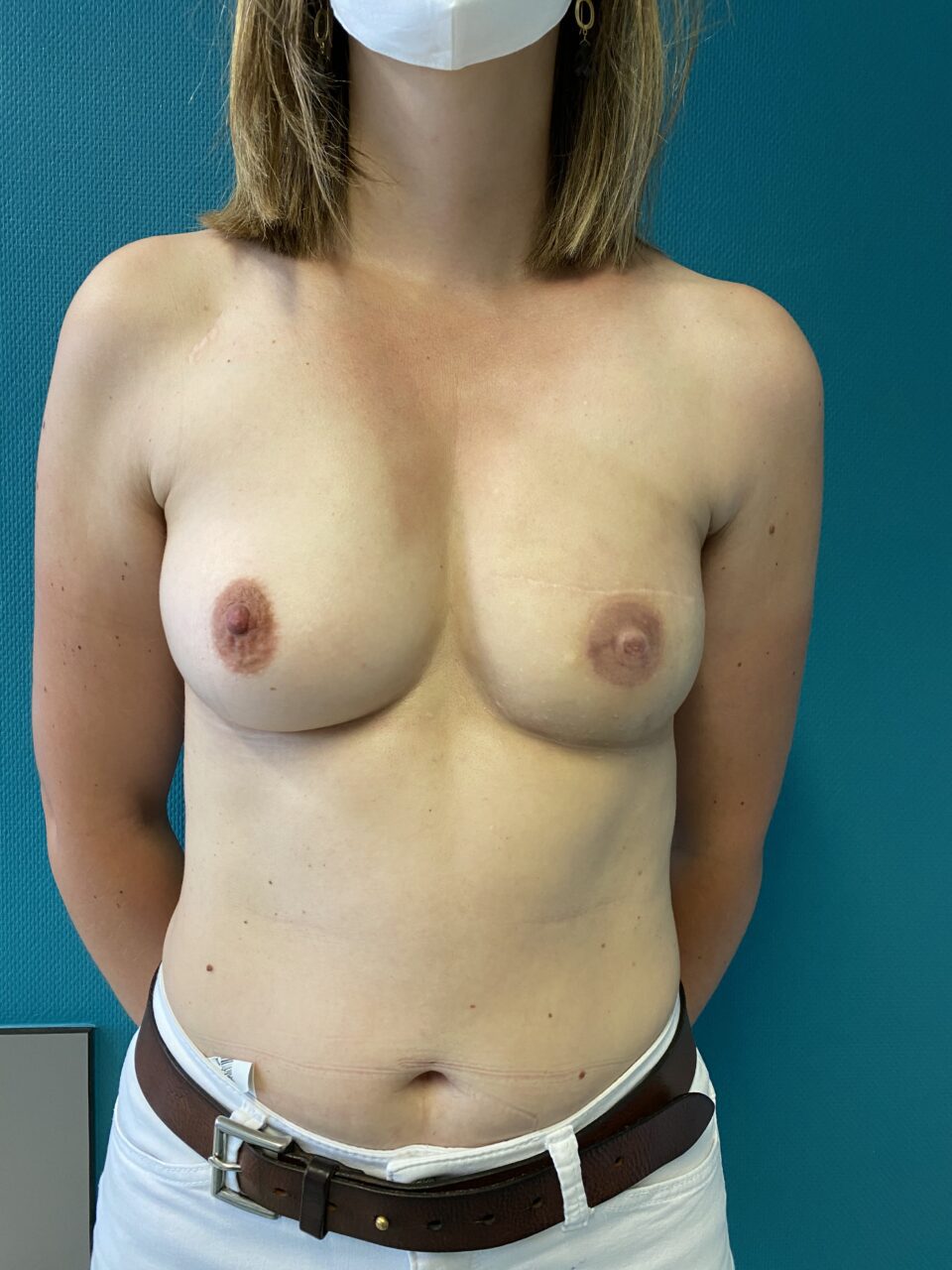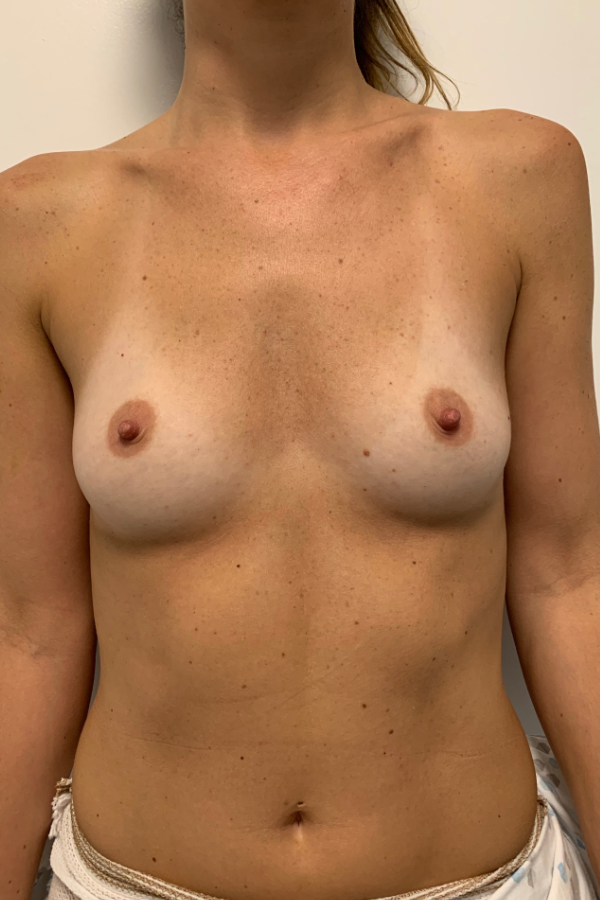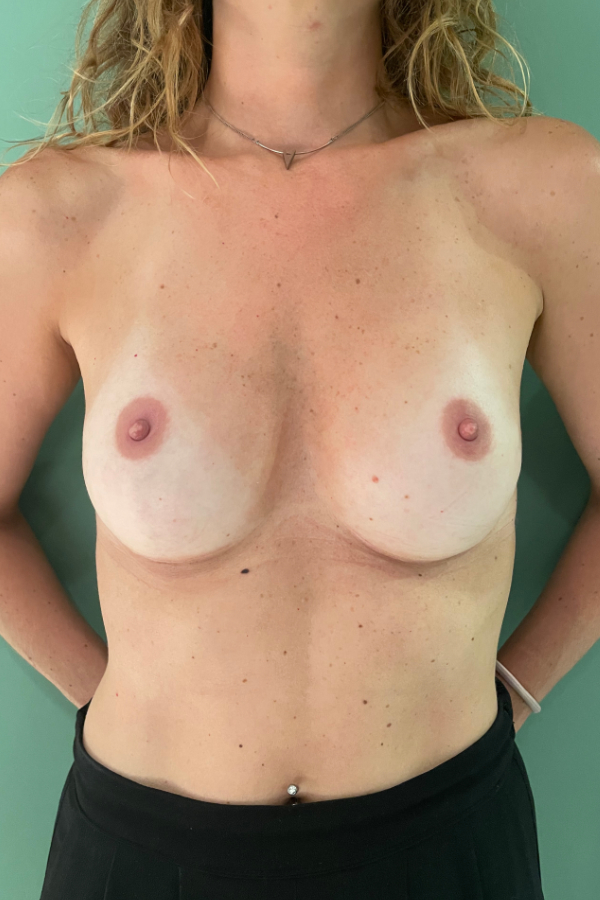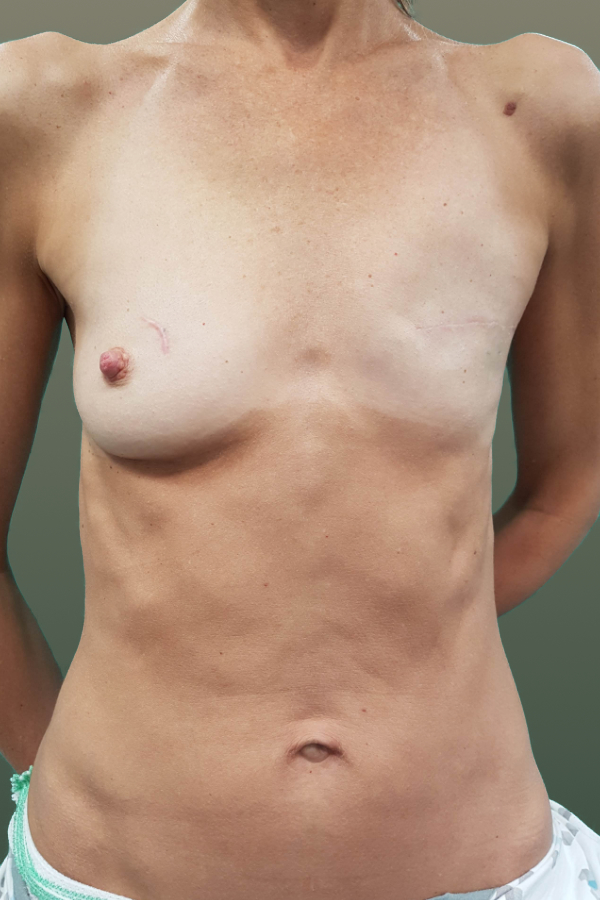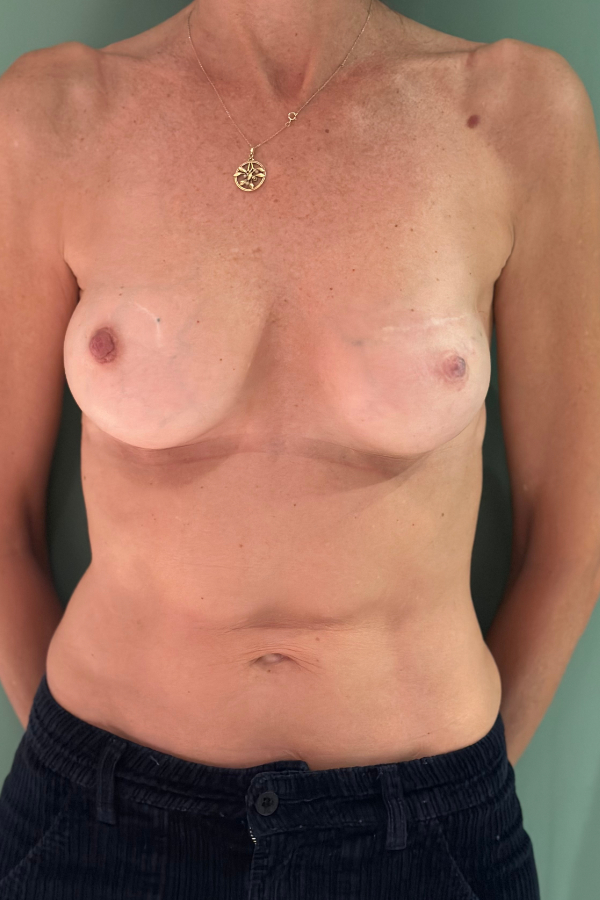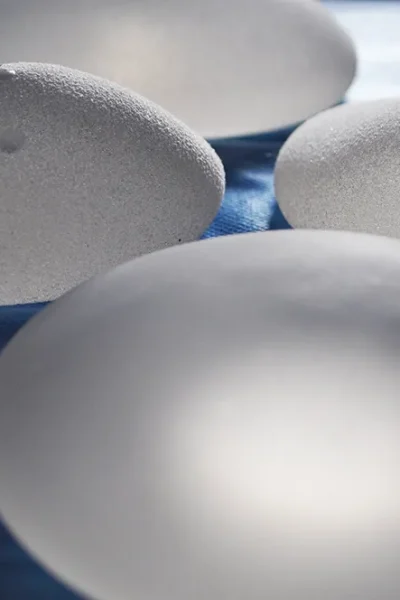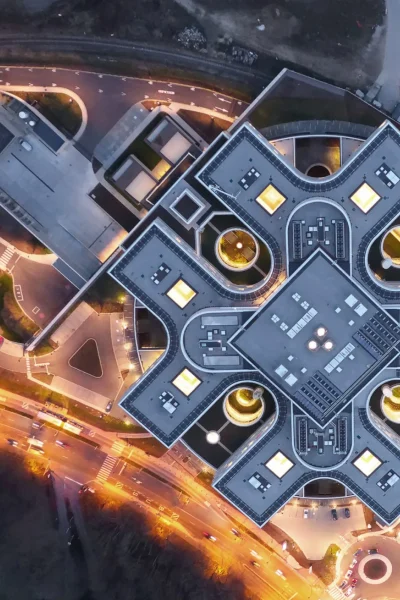The need for breast reconstruction
Breast cancer is a common condition among women. Almost one in seven women develops a tumor in one or both breasts during her life with an increase in incidence in the last decades. This rise in incidence might be due to longer life expectancy, but also because of better,
earlier, and larger cancer screening programs in Belgium and abroad. Early tumor detection and more aggressive treatment of breast cancer have fortunately resulted in a reduction of breast cancer-related mortality.
There are various treatments to fight breast cancer. For some women, it is sufficient to remove the tumor and some healthy tissue around it (tumorectomy or segmentectomy). This is referred to as breast- conserving surgery, as most of the healthy breast tissue is preserved.
Usually, these patients also receive additional treatment with local radiation therapy after the surgery to reduce the likelihood of the tumor to return.
For other women, there is no other option than to take away the complete breast (mastectomy). Additional radiotherapy or chemotherapy before or after the surgery may be indicated, depending on the type of breast tumor.
Not every woman reacts in the same way after a mastectomy. Some prefer to have the breast reconstruction to be performed as soon as possible, while others choose to wear an external prosthesis for a while. Some even prefer to do nothing.
It is a personal choice that you must make for yourself. But to make that choice, it may help if you know all the different types of treatment and reconstructive options.
Classic mastectomy : The breast gland is removed together with the nipple-areola complex and most of the breast skin resulting in a horizontal or oblique scar on the chest wall.
Skin-sparing mastectomy: The breast gland is removed together with the nipple-areola complex, but most of the breast skin will be spared, resulting in fewer and shorter scars.
Nipple-sparing mastectomy: The breast gland is removed but the nipple-areola complex and most of the breast skin are spared, giving the best aesthetic result. It is indicated in risk-reducing mastectomy (patients with a specific gene mutation that increases the risk of developing breast cancer throughout their life) or in selected cases where a small tumor is diagnosed at a distance from the nipple.
A breast reconstruction does not have any influence on the course of the disease. It has, in other words, no negative impact on the breast cancer treatment or its evolution. But it will often provide a better quality of life for the patient. In some cases, we can perform a breast reconstruction immediately after the tumor has been removed. This is called a primary or concurrent breast reconstruction and happens during the same surgery as the mastectomy. In other cases, it may be preferable to wait until any additional treatment (radio- and/or chemotherapy) has been finished. In that case, it is called a secondary or delayed breast reconstruction.
Both reconstructions have their advantages and disadvantages. We have listed them here for you:
Primary reconstruction
Advantages
- Two operations in one time with one recovery period
- Psychological advantage as the breast is immediately reconstructed The aesthetic result is usually better
- Improved wound healing
Disadvantages
- Radiation can cause a varying degree of stiffness and hardness to the reconstructed breast
Secondary reconstruction
Advantages
- Less stressful for the patient as all necessary treatments have been finished
- No influence of the radiotherapy on the reconstructed breast
Disadvantages
- Wound healing can sometimes be more difficult if radiotherapy was given, as this may affect the blood supply to the skin
- More skin should be replaced which might make a patch-effect, as a part of the skin may need to be removed if it is damaged by the radiotherapy
If there is no additional treatment necessary, a primary breast reconstruction is usually advised as it combines both procedures with only one recovery period. If there is any additional treatment necessary (radiotherapy or chemotherapy), we may prefer to opt for a secondary reconstruction and place a temporary breast implant (tissue expander) under the breast skin to maintain the breast cavity and skin envelope and facilitate the breast reconstruction afterward. This will be discussed in detail during the consultation.
There are various techniques to perform a breast reconstruction, but not every method suits every woman. At Ogeeplast Clinic, we find and suggest a suitable technique depending on a set of variables:
- Age
- Body morphology
- Breast form and volume
- Any (and all) previous operations
- Type of surgery to the breast (tumorectomy vs mastectomy) Possible treatment after the oncological surgery
- Your personal preference
Each technique has its advantages and disadvantages. With our vast experience in breast reconstruction, we take all factors into consideration and bring the various options to the table.
The different techniques
As previously mentioned, there are several techniques for breast reconstruction and several factors play a role in choosing the best technique for you.
Partial breast reconstruction
If the breast surgeon did not perform a complete breast amputation (in the case of breast-conserving surgery), several techniques for partial breast reconstruction exist :
- Reconstruction with a local tissue flap
- Breast reshaping/remodeling
- Reconstruction with pedicled flap
- Reconstruction with a free tissue flap
The best option will depend on the size of the removed tissue and the size of your breast. During the consultation, your breasts will be examined and a surgical plan will be suggested.
Total breast reconstruction
If a complete breast amputation (mastectomy) has or will be performed, then a total breast reconstruction will be planned. A total breast reconstruction may be done with your body tissue or with a breast implant. For both of these categories, different techniques are possible.
- Breast implant
- Silicone-filled breast implant Tissue expander
Own body tissue
- DIEP/SIEA flap or belly flap
- SGAP flap or buttock flap
- LAP flap or love-handle flap
- PAP flap or posterior thigh flap
- TMG/TUG flap or median thigh flap Fat
- transfer through lipofilling
TOTAL BREAST RECONSTRUCTION
If a complete breast amputation (mastectomy) has or will be performed, a total breast reconstruction is necessary to restore the breast shape, projection, and volume. This may be done with your body tissue or with a breast implant.
A breast implant or prosthesis is a silicone-filled material with a soft outer shell. The shell can be smooth or textured, with textured shells leading to less capsular contracture over time. At Ogeeplast Clinic, we almost exclusively use state-of-the-art PolyUrethane-covered implants in case of breast reconstruction. In many scientific studies, these implants have proven their superiority concerning long-term stability, durability, and almost no risk of capsular contracture.
Breast implant
A breast implant comes in many different sizes, with regard to surface diameter, volume, and projection. It will depend on your body morphology, your previous breast size, and (in case of one-sided breast cancer) your contralateral breast, which implant is right for you. During the consultation, specific measurements will be taken to determine the best implant for your breast reconstruction.
At Ogeeplast Clinic, we can also simulate the final volume by using test implants or the latest 3D simulation software.
Tissue expanders
If after your mastectomy, there is insufficient skin to cover the breast implant, but the remaining skin is of good quality, a tissue expander may be a good temporary solution. Another indication to place a tissue expander before the final implant is when there remains a potential risk of having radiotherapy after the mastectomy. The expander is used as a “baby-sitterˮ to keep the breast skin and cavity during the radiotherapy. The expander will be removed 3 to 6 months after the end of the radiotherapy and replaced by a tissue flap (or a breast implant in selected cases).
This procedure is called “delayed-immediateˮ breast reconstruction.
A tissue expander is an inflatable prosthesis with a valve integrated into the implant shell, through which we refill the implant.
At the time of the mastectomy, the expander is placed beneath your skin (and sometimes chest muscle), and the skin is closed over it.
Two to three weeks after the procedure, the expander is gradually filled at the consultation in several sessions. This will stretch the skin, creating room for a definitive prosthesis or flap. When the correct volume is reached and the necessary radiotherapy treatment (if needed) is finished, the expander can be removed and replaced by a tissue flap or a definitive silicone implant during a second operation.
A breast reconstruction with implants has both advantages and disadvantages over a tissue-based reconstruction. In some cases, there is a clear advantage of using one option of the other, while in other cases both techniques are possible and a detailed discussion with one of our surgeons will help you in making the best choice.
Advantages of breast implants
- Reconstructions with implants are fairly straight-forward procedures, for which a limited operation time is needed
- There are no additional scars The hospital stay is shorter
- The recovery period is usually shorter
- With the newest generation of PolyUrethane implants used at Ogeeplast Clinic, there is almost no risk of capsular contracture
Disadvantages of breast implants
- Implants suffer from wear and tear and will have to be replaced at some point in your life. An implant may also rupture (although this is very uncommon)
- The aging process of the implant is different than that of the body, with a possible increasing asymmetry later on in life (especially in case of unilateral breast reconstruction)
- The prosthesis does not evolve along with the weight of the patient
- The aesthetic result may be inferior to a breast reconstruction with your body tissue, not only in appearance but also in terms of feel, softness, and durability
A breast reconstruction using your own tissue is a highly complex, but very elegant operation that gives the most stable results on the long term, but has the longest recovery time as well. It is the biggest investment that you can do, but with the best outcome on the long term.
A tissue flap usually consists of fat and skin with or without muscle, together with its main blood supply to nurture the flap. Depending on your overal body shape and fat distribution, a tissue flap can be harvested from the abdomen (most popular), upper back, lower back, or inner thigh. The zone where the flap is taken is closed with the maximum amount of care and aesthetic eye to have a scar that is covered by normal clothing and underwear. The flap is then transferred to your breast, where the blood vessels are connected to blood vessels in your chest. That way, blood can come in the flap and back out again.
In a last step, the flap is shaped to a natural looking, soft, and supple breast.
Depending on the needed tissue volume and your body morphology, the tissue flap can be taken from several areas from the body. We have listed them here for you, together with a brief description:
The DIEP (Deep Inferior Artery Perforator) or Belly (Tummy-Tuck) flap
During the surgery, skin and adipose tissue from the abdominal region is harvested and transplanted to the chest. It is the most commonly used donor site because it provides a sufficient amount of skin and soft fat tissue for any type of breast. Moreover, the abdomen skin usually has a similar skin colour and texture as the breast.
After transferring the tummy flap and connecting the blood vessels, a natural and soft breast shape can be created. The abdomen is then closed like a tummy tuck, with a low scar that is covered by most types of underwear and bikinis. After the surgery, your belly will be flatter and more toned, which for most women is a nice bonus to the surgery.
Depending on the amount of remaining breast skin, a part of the abdominal skin can be kept to recreate a natural breast slope and curvature. Most of the flap will be hidden underneath the breast skin, so the fat tissue of the flap completely fills the breast cavity.
A variation of this flap can be used when the superficial vessels of the lower abdomen are big enough in the patient, which is then called a SIEA flap.
The TMG (Transverse Myocutaneous Gracilis) or PAP (Profunda Artery Perforator) or Thigh flap
When there is insufficient abdominal tissue available (due to previous surgeries, such as a tummy tuck, or in very slim patients), the upper thigh may offer an alternative donor site. In this procedure, the skin and adipose tissue at the level of the upper inner thigh is harvested and transplanted to the chest. If enough adipose tissue of the inner thigh can be harvested to close the thigh without tension, no muscle needs to be transplanted. The flap then only consists out of skin and fat tissue. This is called a PAP-flap. If more bulk is needed, a part of the gracilis muscle (a secondary muscle that helps with the adduction of the leg) is included in the flap, together with its blood supply. It is then referred to as a TMG- flap. The fact that a muscle of the leg is removed does not impair leg function or strength, as the other muscles take over the role of the gracilis muscle.
In most cases, the patient experiences limited strain at the inner thigh for about two weeks. The technique for positioning the flap in the breast and the connection of the blood vessels can be compared with that of the belly flap. The scar at the level of the the donor site runs on the inside of the thigh, from the front of the groin to the rear under the buttock fold. This scar can be covered by normal underwear.
Due to its limited volume (compared to the belly flap), it is often necessary to augment the reconstructed breast around three months after the primary surgery, by using fat grafting (lipofilling) to increase the overall breast volume.
The Other flaps or “Exotic Flapsˮ
When neither the abdomen nor the upper thigh are available for breast reconstruction, we may look for other donor sites such as the buttocks, the flanks, or love handles. The main downside of these flaps is the less acceptable aesthetic outcome of the donor site and the resulting scar afterwards, which sometimes can be visible. This is clearly discussed with the patient before surgery.
The LAP (Lumbar Artery Perforator) or flank (love handle) flap
The technique of the procedure is the same as with the DIEP flap procedure, but we transplant the skin and adipose tissue from the lower back or love handle to the chest. There is no muscle involved.
The scar runs above the buttocks, from the middle of the back to the flank, and might be a bit higher than the underwear or the bikini lines. It may be, however, that the contour of your back slightly changes after the surgery. Therefore, liposuction of the other flank might be necessary to restore the symmetry of the back. A touch- up procedure is usually done three to six months later.
The SGAP (Superior Gluteal Artery Perforator) or buttock flap
The technique of the procedure is the same as with the DIEP flap procedure, but we transplant the skin and adipose tissue from the buttock to the chest. There is no muscle involved.
The scar runs over the width of one buttock cheek, but you can cover it with normal underwear. It may be, however, that the contour of your buttocks slightly changes after the procedure and it may look a bit flatter. Also, the fatty tissue of the buttocks is a bit denser than that of the abdomen, so the breast may feel less soft. A touch- up procedure is usually done three to six months later, during which lipofilling is performed to correct the form and improve the softness of the breast.
A breast reconstruction with your own tissue has both advantages and disadvantages, compared to breast implants. In some cases, there is a clear advantage of using one option of the other, while in other cases both techniques are possible and a detailed discussion with one of our surgeons will help you in making the best choice.
Advantages of a tissue flap
As opposed to a reconstruction with a breast implant, the advantages of a reconstruction with autogenous tissue increase over time.
- The longer that your own tissue is present, the less chance of complications
- The aesthetic result improves over time: the breast increasingly gains a more natural shape and scars fade
- The breast feels warm, soft, and supple
- The bodyʼs own tissue follows fluctuations in weight and also follows the normal aging rhythm of the body
- There are fewer late surgical corrections needed
- It is often the best choice if you underwent radiotherapy, as the stiffness of the breast skin and tissues can be treated by replacing them with soft tissue from your body
Disadvantages of a tissue flap
- A reconstruction with your own tissue requires a greater investment in the initial phase
- The procedure is more complex and several factors play a role in choosing the best technique
- The surgery takes longer and there is a higher risk of complications with regard to blood perfusion to the flap
- The hospitalization and recovery period last longer
- There is an additional scar on the belly, thigh, or elsewhere (depending on the donor site)
If you have a rather small breast volume (size A or B), a breast reconstruction with lipofilling can give you a supple, harmonious, natural-looking breast with limited downtime. First, the fat is suctioned from areas of your body where you have a bit of excess. This is done through small 3mm incisions that are barely visible. The fat is then washed and prepared to inject. By strategically injecting the fat in several layers, we can recreate a natural-looking, soft breast.
Advantages of breast lipofilling
- It is the option with the least amount of scars or incisions.
- This surgery has the best result if there has been a temporary implant placed at the time of mastectomy to maintain the breast skin envelope and create a recipient bed for the fat graft.
- The surgery is rather painless and the recovery time is fairly short.
- You have a long-lasting and natural result if you maintain a stable weight
Disadvantages of breast lipofilling
- As the survival of the injected fat cells depends on a lot of factors, you cannot expect a big breast volume with this kind of procedure. The final breast volume is therefore limited to an A or B cup. A bigger volume may be obtained if we combine fat injections with a breast implant.
- Usually, two to three operations are necessary to obtain the final breast volume, as the amount of fat that can be injected per session is limited (to be sure that most of the injected fat survives).
- Lipofilling can never be done at the same time as the breast amputation.
- You need to wear compression garments for 6 weeks on the zones where fat has been aspirated.
OgeePlast Clinic is a world-renowned reference center for breast reconstruction. The ideal flap choice depends on several factors:
- The required tissue for the breast reconstruction (breast volume)
- The body contour of the patient and donor sites analysis
- Patient habits and daily activity
- Technical issues related to the vascular anatomy
The choice of the flap is done after a thorough physical examination of the patient but also depending on the patientʼs wishes and radiological examination of the vessels. This will be discussed during the consultation
